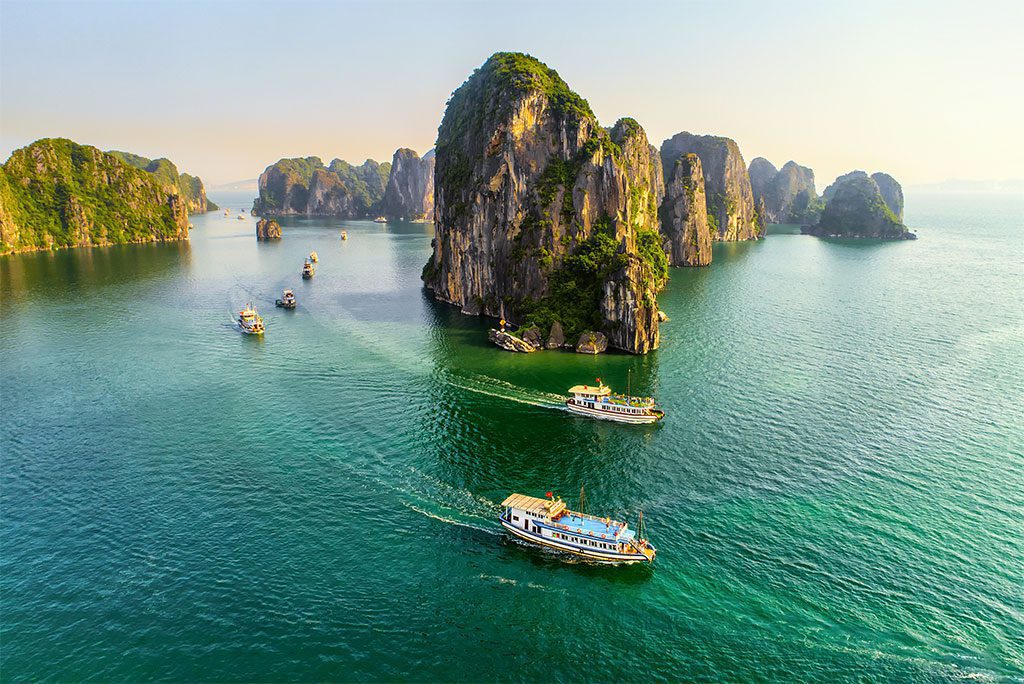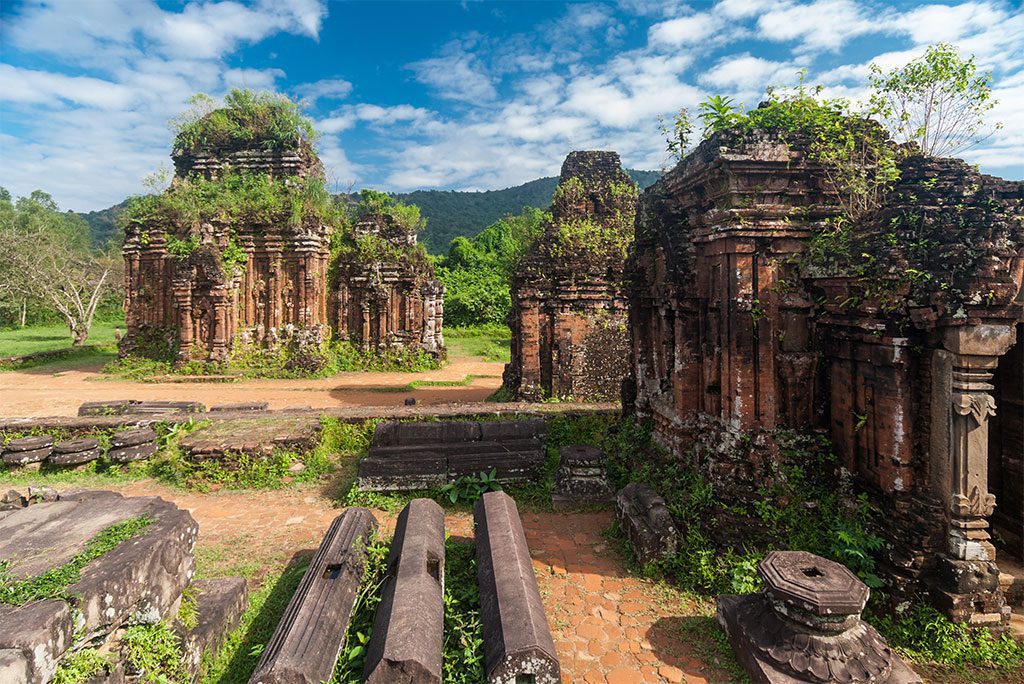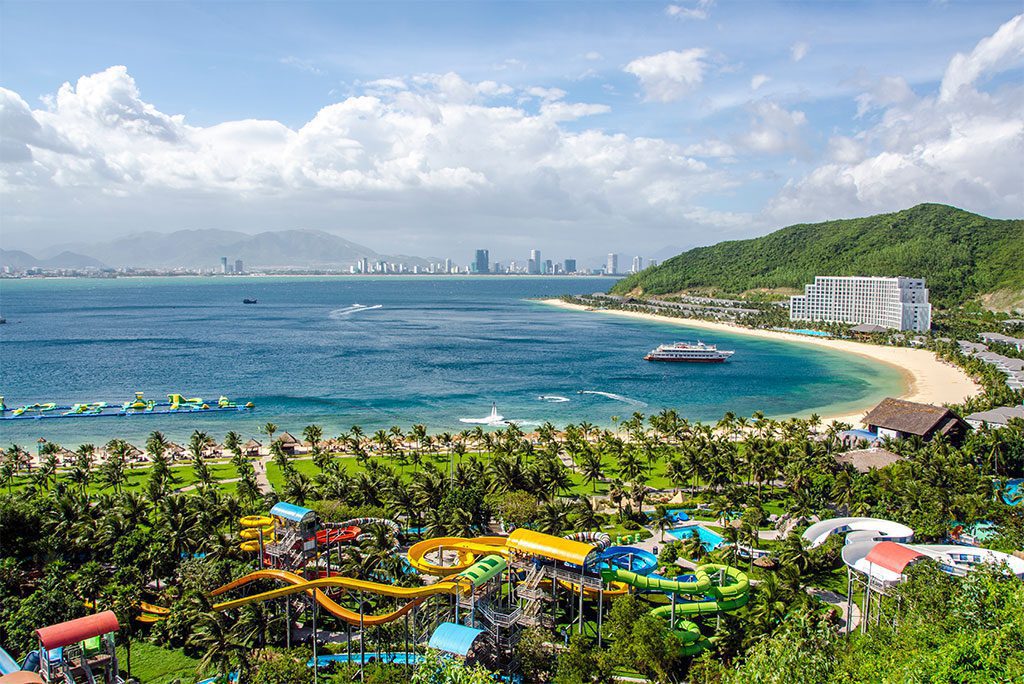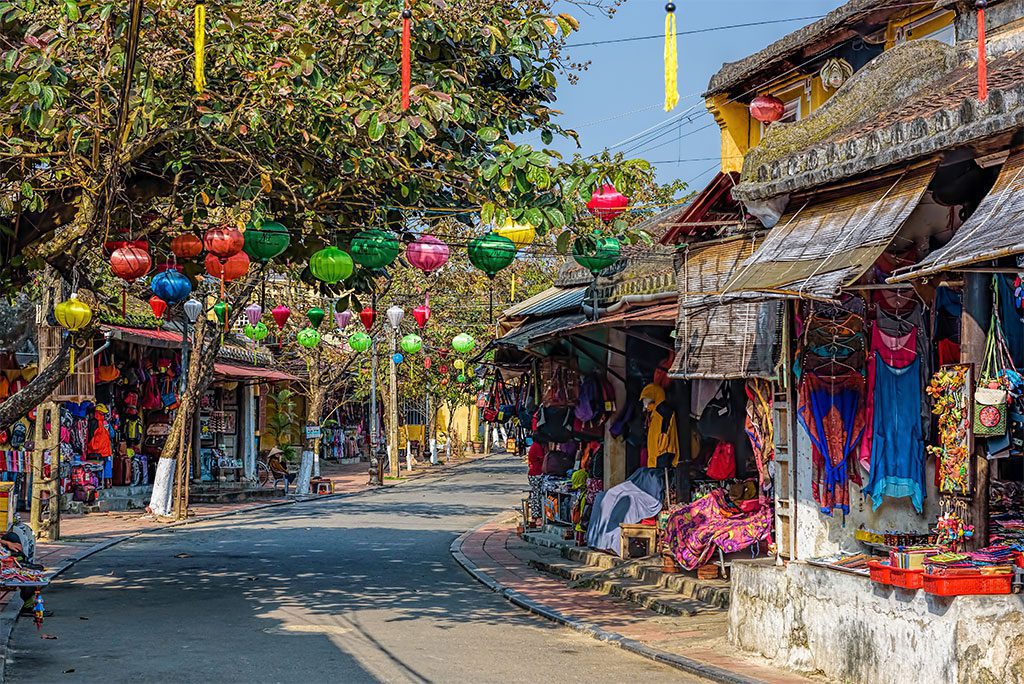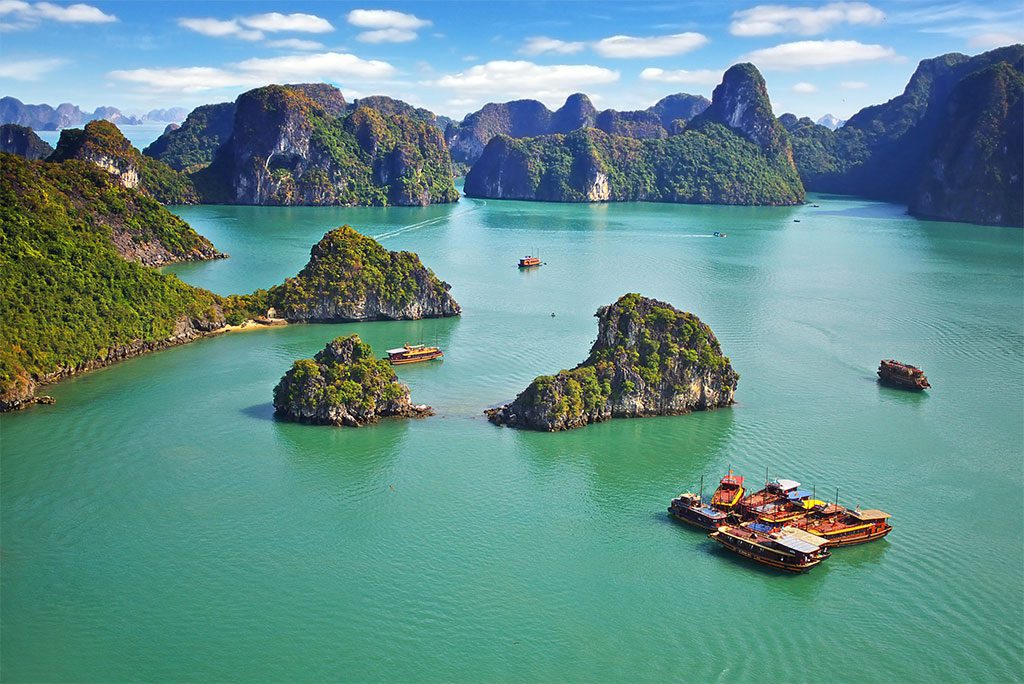Vietnam is a long, narrow country sandwiched between the South China Sea and the borders of Laos and Cambodia. It is home to a wide variety of breathtaking landscapes, from the verdant rice terraces and forested mountains of the north to the picturesque valleys of the central highlands, the fertile delta, and beautiful beaches of the south. The people of Vietnam have
endured many hardships. Vietnam was a protectorate of France during the 19th century after being ruled by successive Chinese dynasties for about a millennium up to 938 AD. A war broke out after Vietnam gained independence. Now you know why Vietnam is so pleased with itself. for its stunning vistas and rich history, not only for its ferocious defence of its own sovereignty.
Halong Bay, a stunning group of karst islands and formations off the northern coast, is the first thing that comes to mind when most people think of Vietnam. The capital city of Hanoi is teeming with people and bikes. Our recommended sights in Thailand will help you make the most of your time in this stunning Southeast Asian country.
12. Dalat
Dalat’s year-round mild climate and picturesque landscape of misty valleys, lush pine trees, and colourful flowers previously made it a popular summer resort for Vietnamese emperors and French colonials. Recently, this picturesque village in Vietnam’s South Central Highlands has become a hotspot for newlyweds, weekend warriors, and heat-seekers.
Dalat, a city with a manageable size and layout, is a gorgeous sight of French colonial buildings and villas nestled among scenic settings. The city is famous for its royal palaces, formerly held by Vietnam’s last emperor. It is also a major tourist attraction. Both the Hang Nga Guesthouse, the city’s most peculiar feature, and these beautiful palaces are available for excursions. The “Crazy House,” as it is more often known, is a fantasy building including caverns, spider webs, and forms resembling animals and mushrooms. Locally produced fruits, flowers, and vegetables, as well as handicrafts and silk embroidered goods, may all be found in Dalat’s bustling market.
Lakes, flower gardens, plantations, and mountains with lovely waterfalls and routes for hiking and mountain biking may be found just outside the municipal limits. The Region of Love is a stunning valley full of lakes and pine trees where visitors may go paddleboarding and canyoneering.
11. My Son
My Son is a significant archaeological site on the central coast of Vietnam, not far from the town of Duy Ph. My Son, now recognised as one of Southeast Asia’s most important cultural monuments, was formerly a major centre of religious Hindu festivities during the reign of the monarchs of the Champa Kingdom (4th–14th centuries).
My Son is a complex of ruins in various states of disarray and repair, spread out in several groups. These structures are thought to have once housed more than 70 temples built with brick and decorated with carvings and sculptures depicting animals, priests, gods, mythical battles, and inscriptions in Sanskrit and Champa.
There is a museum on-site where guests may learn more about the ruins and their significance via interactive displays and relics. There are a few cafés, food stalls, and a gift store all within walking distance of My Son’s main entrance. Guests may see live Champa dance performances at certain intervals throughout the day. Visitors may also enjoy hiking and kayaking in the area’s surrounding rainforest, hills, and lake.
Group excursions from Hoi I often visit My Son. Travelers may also hire motorcycles and make their way to My Son that way.
10. Phu Quoc
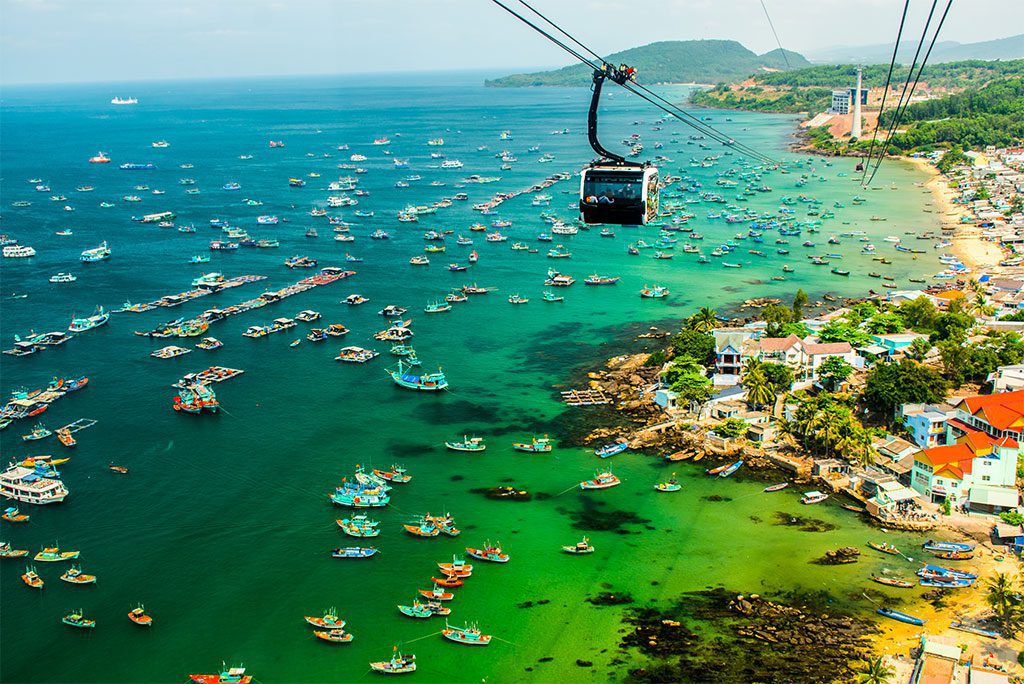
Soar above the scenic Phu Quoc Island on the longest cable car. Image source: Pavel Szabo/Shutterstock.com
One of the most beautiful islands in the Gulf of Thailand is Phu Quoc. Although it is physically closer to Cambodia than the rest of Vietnam, it is technically part of Vietnam. Present-day features include lush tropical vegetation, beautiful beaches, and rolling hills. However, the island’s past as a French missionary post and a jail for colonial war criminals during the French occupation makes for intriguing sightseeing.
The island’s tropical beauty, more than its history, is what draws visitors. While in Phu Quoc, visitors may lounge on sandy beaches, ride scooters through fishing towns, tour pearl and pepper plantations, and even hike to nearby waterfalls if they’re feeling adventurous.
While exploring the seafood-centric island of Phu Quoc, be sure to sample some of the local specialties, like the nuoc mam fish sauce that was developed here.
9. Phong Nha-Ke Bang National Park
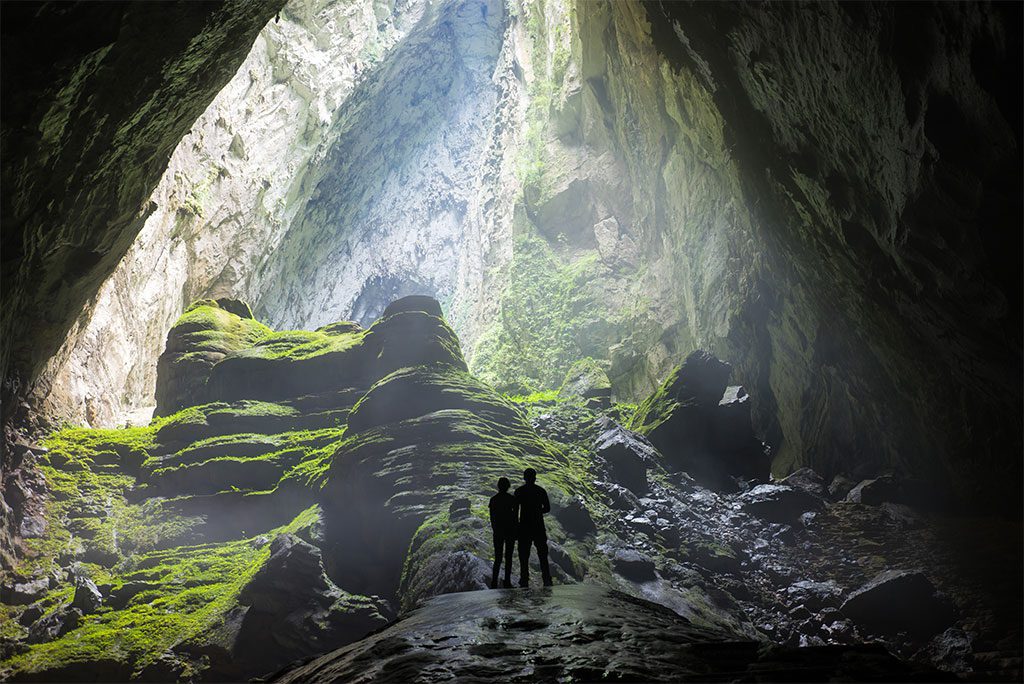
Enter the mystical Son Doong Cave, the largest cave in the world. Image source: Vietnam Stock Images/Shutterstock.com
Phong Nha-Ke Bang National Park is a beautiful park hidden away in Quang Binh Province on Vietnam’s central coast. The park’s popularity has increased because of its proximity to a major airport and the fact that it was used as a shooting site for Kong: Skull Island (2017).
Phong Nha-Ke Bang National Park, which first welcomed visitors in 2010, is popular with those in search of a rural retreat. On your bicycle, you may explore the Kong forests at your own leisure and enjoy the slow pace of life. There are hundreds of caverns and hidden rivers to discover in the area’s 400 million-year-old karst mountains. If you’re in the area, you should definitely check out Son Doong Cave. It is one of the biggest caverns on the planet and is home to its own secret rainforest, microclimate, and Underground River.
The park’s proximity to the Laos border necessitates stringent security measures, and visitors should be aware of the substantial military presence in the area. Because of its wartime past, the park contains among the largest concentrations of unexploded ordnance in the world, making unguided visits illegal.
8. Ho Chi Minh City
Previously known as Saigon, Ho Chi Minh is currently Vietnam’s largest metropolis. The Republic of Vietnam’s previous capital was located there as well. Saigon was renamed Ho Chi Minh City after it was taken by the North Vietnamese in 1975, although the old term is still often used, especially when referring to the city’s bustling downtown.
Ho Chi Minh City may be home to temples, museums, parks, and tourist shops. Anything you’re looking for may be found in this city. Visit the Saigon Skydeck at night for a breathtaking panorama of the city lit up below.
The Cu Chi Tunnels were the nerve centre for numerous military activities throughout the Vietnam War, and any history fan would be remiss not to investigate this enigmatic underground system.
The Reunification Palace, also known as the Independence Palace, is a fascinating destination with its five levels and intriguing history. The moment a tank rolled through the palace gates and Saigon fell is immortalised there, making the location significant in Vietnamese history. Outside the royal grounds lies a miniature version of this same tank. Visit the War Remnants Museum or the Museum of Vietnamese History if you’re interested in learning more about the conflict.
7. Mekong Delta
More than a third of Vietnam’s population relies on food from the fertile Mekong Delta, sometimes known as the “Rice Bowl of Vietnam,” because of its abundance of rice, fruit and vegetable orchards, and livestock ranches.
In terms of biodiversity, this spectacular riverbank rivals the Amazon. The Mekong Delta is an unusual region that spans most of southern Vietnam and is home to rice fields, mangroves, lily pad canals, and an abundance of exotic animals.
Tra Vinh, one of the most picturesque villages in the Mekong Delta, is only one of the many places that may be easily explored by bus or motorcycle. Relaxing on a boat through the Mekong’s mangroves and tributaries is a once-in-a-lifetime opportunity. By being paddled down the river by a native in a traditional wooden canoe, you will get a first-hand look at river life as you pass by floating marketplaces, monkey bridges, water buffalo, and fields of crops. During the dry season (December–May), there is less of a possibility of flooding along the Mekong, making it the best time to go there.
6. Nha Trang
You’ve found the correct spot if beaching is what you’re wanting. With its casual vibe and excellent scuba diving, Nha Trang has become Vietnam’s most popular beach resort. Nha Trang may not have the most stunning beaches in Asia, but it does have warm water and some attractive offshore islands.
An intriguing place to take a walk is along the seafront promenade, which is usually bustling with activity and has gardens and sculptures. Nha Trang is like many other coastal towns in that it really comes alive in the evenings. An abundance of hip eateries and watering holes can be found in the area immediately next to the beach.
Nha Trang is not only a place for strolls and sunbathing, however. Visit the world’s longest cross-sea cable car or relax at the Thap Ba Mud Bath. The Cham towers at Po Nagar, which date from the 7th to the 12th century and are still used as a holy place by Cham, Chinese, and Buddhists today, provide a glimpse into the city’s past.
5. Sapa
Sapa, in the Hoang Lien Son mountains of northern Vietnam, is a fascinating, off-the-beaten-path village that traces the border with China. The mountain hamlet sits at an impressive 1,500 metres above sea level, making for some challenging hiking on the surrounding terraced hills and slopes. Sapa’s raw and real culture is a big part of its allure, even though the region’s abundant natural beauty is what ultimately draws visitors to this remote part of the nation.
It takes days to hike through rice terraces, remote communities that have yet to be discovered by tourists, and the clouds of Fansipan, Vietnam’s highest mountain. Apart from the beautiful sights, the best part is definitely getting to know these interesting locals; youngsters from the area will tag along and attempt to sell you their homemade jewellery or practise their English with you.
Sapa’s town centre, with the Gothic church, town plaza, and city hall, are all excellent examples of French colonial architecture. Sapa is an important market town where many of the local ethnic groups go to sell their unique and beautiful products. The Sapa Culture Museum is a wonderful place to learn about the history and traditions of the local Sapa people.
4. Hue
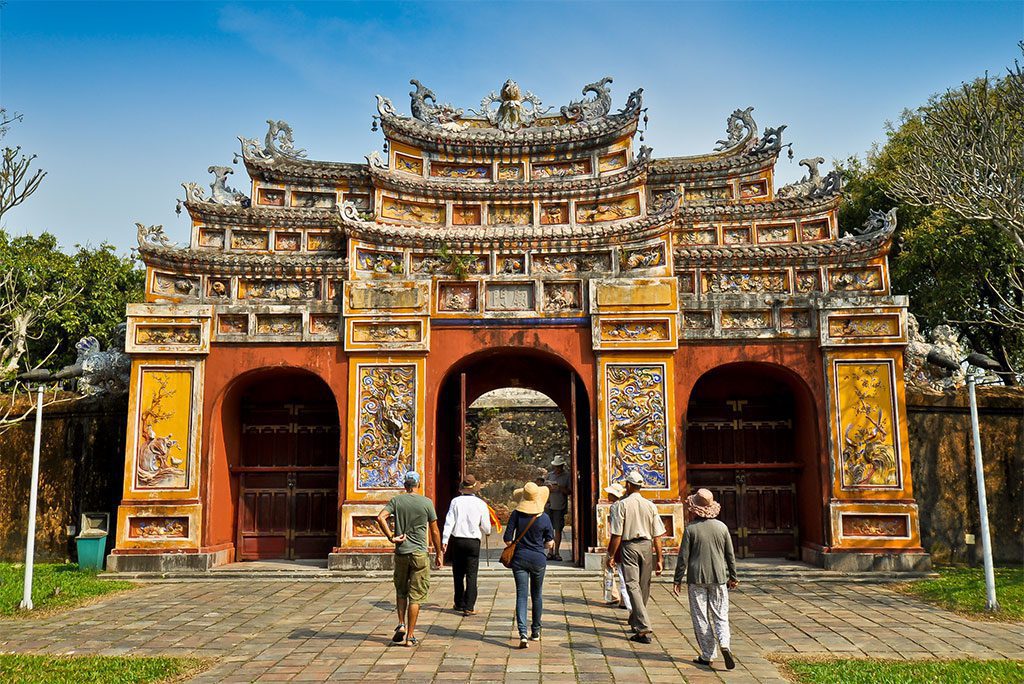
Step into history through the grand Hien Lam Pavilion Gate. Image source: jejim/Shutterstock.com
Originally the seat of Vietnamese imperial power, Hue was once known as the Panduranga of the Cham Kingdom. Hue, a city in central Vietnam, played a pivotal part in the country’s war effort. Captured by the Viet Cong for a total of 24 days, hundreds of people were executed here if they were deemed to be supporters of the south.
Today, the city is divided in two by the Perfume River. To the north is the historic district, complete with the ruins of a once-great fortress, while to the south is the more contemporary urban core. The Thien Mu Pagoda is Hue’s unofficial emblem, while the Demilitarized Zone, which represents the formal old boundary, is a popular day trip destination.
The Citadel stands as the city’s most recognisable landmark. Once the capital of the Nguyen monarchs, the Citadel is a huge complex of stately palaces, elaborate temples, walls, and gates. Prime sights inside the Citadel include the Forbidden Purple City, Thai Hoa Palace, and the Ngo Mon Gate. The Thien Mu Pagoda, the city’s official emblem, is also a prominent riverside feature.
It is also advised to take a walk down the promenade, past the gardens filled with statues, and then continue ahead by scooter or boat cruise to the Tombs of the Emperors on the outskirts of the city. The cherry on top is the spectacular Buddhist architecture at the Tomb of Tu Doc, which dates back to the 19th and 20th centuries.
3. Hoi An
Hoi An, the relaxed and charismatic centrepiece of every trip to Vietnam, has a unique and irresistible appeal all of its own. This colourful ancient town is a short bike ride from some of the best warm-water beaches in the country, which are located along the central coast to the south of Danang.
Hoi An’s afternoons may be spent exploring the old town’s meandering streets, which are dotted with ancient houses and Chinese temples, as well as stores with wooden facades and good options for retail therapy.
Spend some time window shopping, haggling for a spa discount, and having a custom dress or suit made at one of the town’s many renowned tailoring establishments. A fourth of the town’s residents live in centuries-old Chinese merchant mansions with distinctive glaze-roofed courtyards, so it would be a shame to leave without seeing them.
2. Hanoi
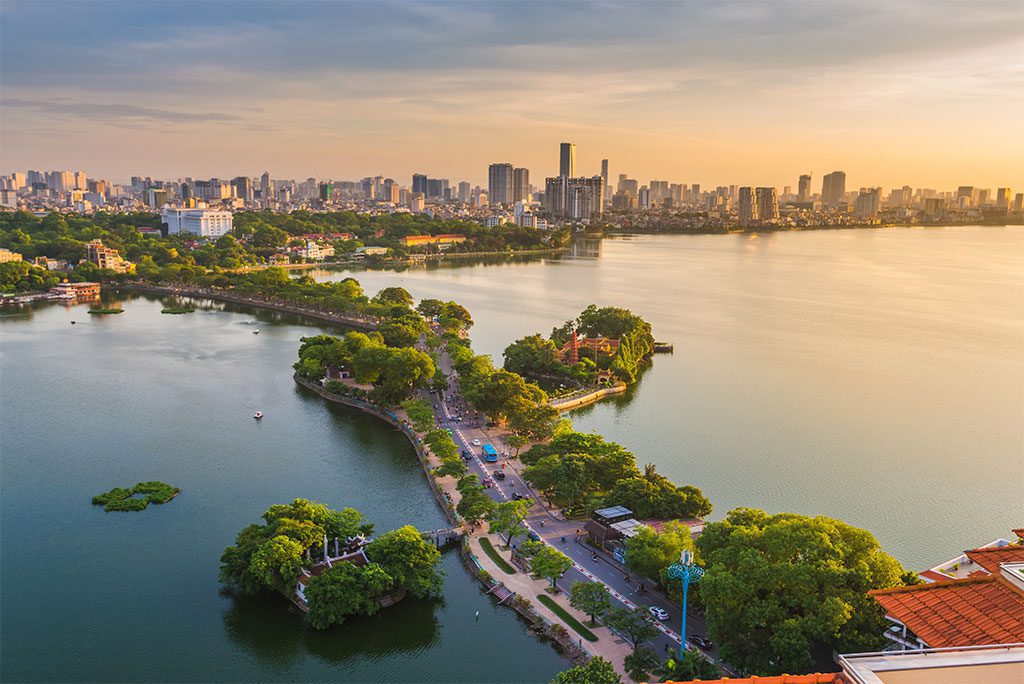
Witness the enchanting beauty of Hanoi as the sun sets. Image source: satoriphoto/Shutterstock.com
The Vietnamese capital of Hanoi is notoriously hectic, but that’s part of the city’s allure. It is an interesting blend of French and Sino-Vietnamese culture. It is one of the fastest-growing cities in Southeast Asia. Those venturing to the heart of a nation should come prepared. In a metropolis where vehicles, motorcycles, and tuk-tuks all jostle for the right of way, crossing the street may be a matter of life or death.
Hanoi’s Legend’s Corner is a great place to see the insanity that is Hanoi. The prime location of Legend Beer makes it the perfect place to view the madness of rush hour with a beer in hand as the sun sets. Pedestrians, dogs, automobiles, tuk-tuks, and scooters all coexist peacefully in the traffic, and yet you won’t hear of many accidents.
To get away from the hustle and bustle of the city, take a walk around the tranquil freshwater Hoàn Kim Lake in the heart of the Old Quarter or learn more about Vietnam’s rich history at the Thăng Long Imperial Citadel. The revolutionary leader and president of Vietnam, Ho Chi Minh, is buried in Hanoi in his mausoleum, which is a must-see attraction.
1. Ha Long Bay
Halong Bay, located approximately 130 km (80 mi) east of Hanoi in northern Vietnam, is renowned for its lovely emerald-hued seas, a number of outstanding limestone karsts, astounding waterside caverns, and beautiful tree-topped islands. Activities such as scuba diving, kayaking, trekking, and rock climbing are all available in and around Cat Ba National Park, making it a popular destination for those seeking excitement. You may pick from a wide variety of cruises in Halong Bay, ranging from the most affordable to the most luxurious, if you just want to kick back and take in the sights.
There is a wide variety among the dozens of islands dotting the sea, from uninhabited isles where monkeys and antelope wander freely to larger populated isles with beautiful beaches. The best way to take in the stunning scenery of Ha Long Bay is aboard a cruise boat. Tours on one of the hundreds of boats available, from traditional Chinese junks to luxury cruisers, may last anywhere from a single day to several. Meals, nightlife, and excursions to islands, caverns, and lagoons are common features of these cruises. Hanoi and other major ports, including Haiphong, Halong City, and Cai Rong, are where most boat tours depart from.
Halong Bay is susceptible to weather changes, much like any other seaside vacation spot. If you want to see as much as possible, schedule your vacation between March and June. Off-season travel between June and September means cheaper rates; just keep an eye on the monsoon forecast to avoid being caught unprepared.


